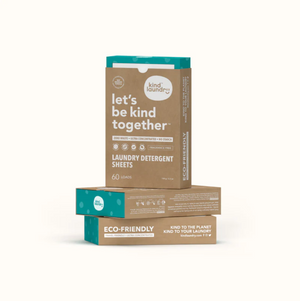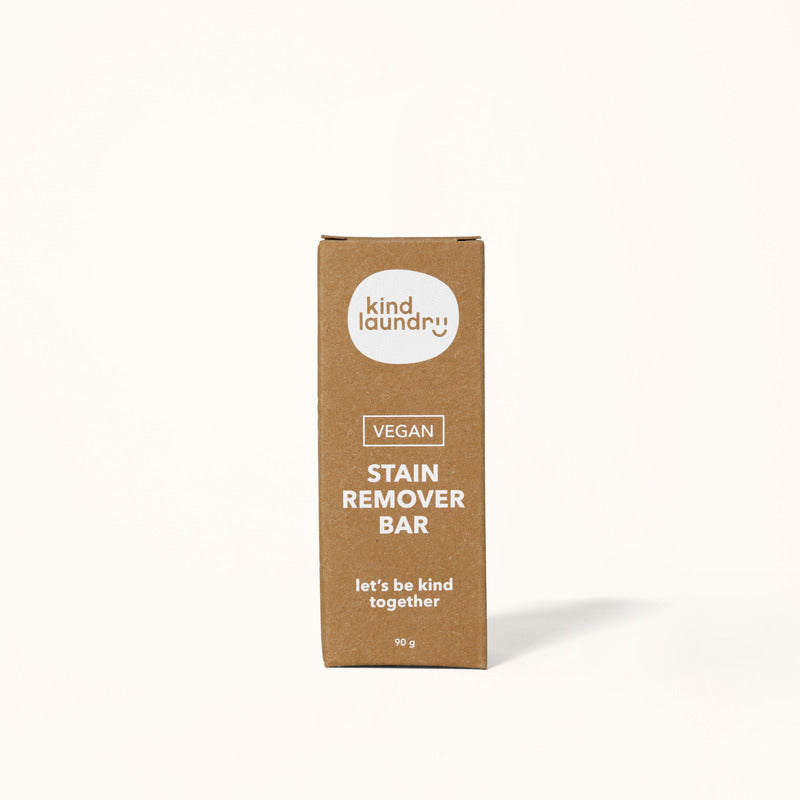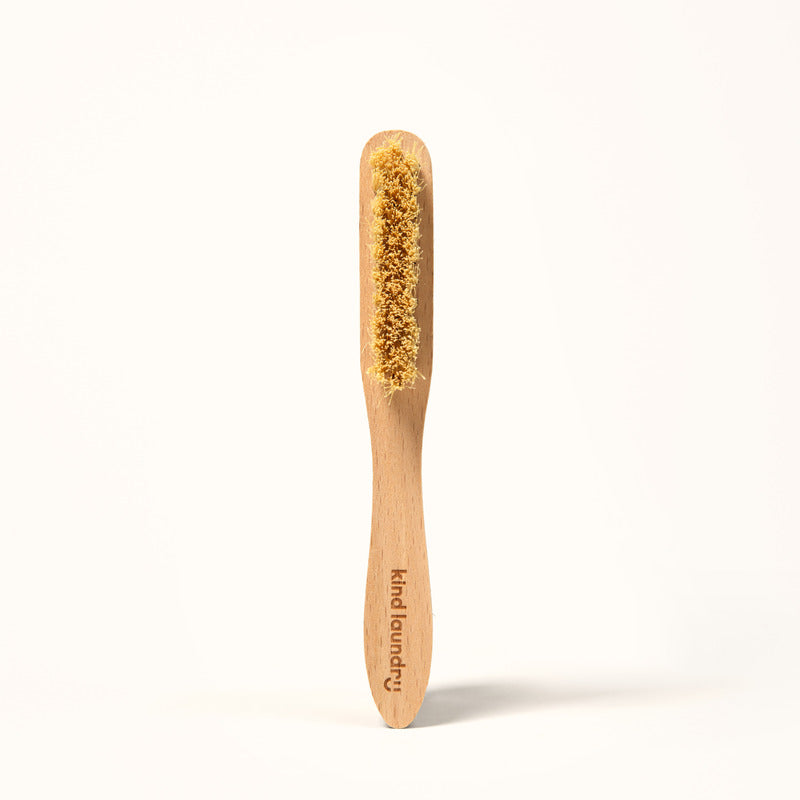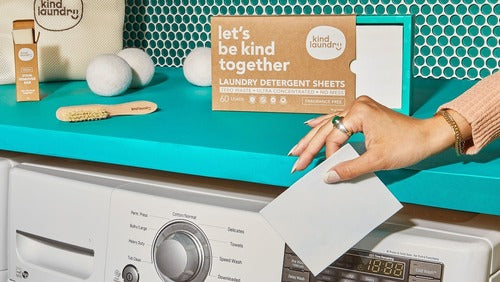Are you feeding the microbes in your septic system mindfully? Being a homeowner means getting intimate with every aspect of home maintenance. If your home is located in a rural area or a small community, you're likely to be one of the 25% of North Americans whose wastewater is treated by a septic system. And if it’s not? You should read on anyway! The laundry detergent you use has a direct impact on Mother Earth – let’s keep her and your clothing clean!
Septic systems can be naturally helpful to the environment. Through the microbial action within them, they are charged with eliminating waste, but they also recycle water and naturally replenish water tables in the process, making them beneficial for the surrounding vegetation and wildlife as well.
Why do homeowners opt for septic systems? They have long been recognized as a budget-friendly solution for wastewater disposal. They are also practical. These systems work particularly well in rural areas, where sewer systems may not be available, and residents would otherwise have to pay expensive sewer bills. The type of septic system installed in a home can differ depending on various factors, such as soil type, household size, and location. 
In conventional or “soil-based systems,” wastewater is discharged from the septic tank into a series of perforated pipes. These are buried in a leach field, and chambers slowly release the effluent into the soil. Because your septic system discharges wastewater into the environment, being aware of what you put into it is essential! Choosing the right laundry detergent is crucial in maintaining your septic system and being mindful of what is being released into the environment.
Let’s take a look at how to work in harmony with your laundry routine and your septic system!
What Features to Look For in a Laundry Detergent for Septic Systems?
A septic system functions by breaking down and decomposing waste material in a tank. However, the chemicals in some laundry detergents can hinder the natural breakdown process and damage your system. So what should you look for to ensure that your laundry detergent is working in simpatico with your septic system?
The Septic Safe Label
To keep your septic system working effectively and to protect the environment, it's crucial to look for laundry detergents that are labeled "septic safe," like all of Kind Laundry’s products.
These detergents have been specifically formulated without phosphates, bleach, and other harsh chemicals that can pose a threat to your septic system. By opting for septic-safe laundry detergent, you can ensure trouble-free laundry days while also preserving the life of your septic system and the integrity of the environment around it.
Eco-Friendly Formulas
Why over complicate life with labels that need Duo Lingo to interpret? Chemicals like phosphates and bleach can build up and cause major headaches when it comes to septic maintenance.
Opting for a product with biodegradable surfactants, like Kind Laundry’s Eco-Friendly Laundry Detergent Sheets, ensures a nature-compatible formula. A plant-derived ingredient list means that it is absent of the harsh chemicals that can eat away at the natural bacteria in your septic tank. These little guys are responsible for naturally breaking down waste, and when they can’t do their job, backups, and issues occur.
Look for Low Foam
Using a low-foam laundry detergent can provide numerous benefits for those with septic tanks - including reducing the amount of foam that enters the tank and breaking down more easily than traditional detergents. If you have an aerated septic system, you’ll want to choose a powdered or high-efficiency laundry detergent option that does not foam up too much.
Liquid vs. Powder
Our verdict? Liquid or biodegradable sheet-based laundry detergents are the way to go.
While both have their advantages, it's recommended to opt for a liquid or biodegradable sheet-based laundry detergent. Unlike powdered detergents, liquid detergent has fewer fillers, like clay or powdered plastics. These fillers from powdered detergents can build up in your septic system and cause clogging, among other issues.
For any mode of detergent, be sure to look for one with no phosphates (the arch enemy of your system's natural bacteria foot soldiers!) and low surfactants, which are in charge of separating the dirt from fibers but can also be harsh on your septic system.
Bonus points if you can find a fabric softener that fits the same criteria! When combined with an eco-friendly detergent, a duo of both in one product can save on money and excess packaging.
It's always best to prioritize the health of your septic tank, so don't hesitate to make the switch to a more septic and eco-friendly detergent for your laundry needs. In the long run, it will save you costly maintenance visits, potential flooding of your drain field, and the impact on the environment.
Are Laundry Detergent Pods Safe for Septic Systems?
Doing laundry is one of those everyday tasks that is begging for optimization so you can get on with life, whether that be your morning workout or catching your evening streaming show. It’s tempting to pop one of those oh-so-petite detergent pods and leave your machine to do the rest. Your laundry may not complain, but your septic system in the environment may have a hard time digesting this choice!
At an average of five loads of laundry a week, consumers have been told the significant water usage from traditional liquid detergents can add up, making a laundry pod look like an environmentally friendly option. But are these pods safe for septic systems?
It's a valid concern, as we want to ensure that we aren't causing harm to our home's plumbing or the environment. The good news is that they can be safe as long as you follow the aforementioned criteria; biodegradable ingredients, low surfactants, and no phosphates. Many laundry pods are designed to be septic-safe. As long as you're using pods that are labeled as such and following the instructions for use, you can wash your clothes guilt-free.
How To Keep Your Septic System Healthy
The moment water from your household enters the drain, it’s considered wastewater. With the average person using 60 to 70 gallons of water a day, what we put down the drain matters!
Now that you’ve built some empathy for the hard work your septic system is doing underground, let's look at how you can continue to take care of this vital part of your household operations.
Schedule Regular Maintenance
Maintaining your septic tank is crucial for the well-being of your household plumbing in the long run. Some people neglect the necessary upkeep of their septic tank, which can lead to costly repairs and what some might consider even worse – unpleasant odors.
A general rule of thumb is to have your septic tank pumped every three to five years, depending on the size of your household. However, other factors, such as the amount of wastewater produced and the tank's size, can impact the frequency of maintenance.
Regular maintenance is not only beneficial for your septic tank but also for the environment, as an improperly maintained tank can lead to water pollution. Thus, keeping track of your maintenance schedule is essential to avoid any unwanted surprises.
Give Some Love to The Bacteria
The bacteria in your septic system are working hard to break down the solid in your wastewater. When they’re happy, you’re happy because this means fewer service visits to unclog a backed-up tank. Choose septic-safe detergents to maintain an optimal balance in bacteria and enzymes that break down waste.
This means avoiding detergents that contain these ingredients:
- Artificial whiteners and brighteners
- Chemical dyes
- Artificial fragrances
- Chemical surfactants, sulfates, and enzymes
- Chlorine bleach
- 1,4-Dioxane
- Parabens
- Phosphates
- Phthalates
- Synthetic foaming agents and thickeners
Opt for a High-Efficiency Toilet
The Environmental Protection Agency recommends upgrading to high-efficiency toilets in your home to help lessen the water load on your septic system. Considering that toilet use accounts for 25 to 30% of all household water use, this is a crucial touchpoint to not overburden your septic system.
Many older homes will have toilets that have a hefty 3.5 to 5-gallon reservoir, while high-efficiency toilets use just a fraction of this at just 1.6 gallons of water or less per flush. This makes for an easy way to reduce the amount of household water entering your septic system.
Spread Out Your Laundry Routine
Doing all of your household laundry at one time can harm your septic system. While it’s tempting to binge-wash on the weekends and reap the results of your hard work throughout the week, your septic system is doing a silent scream down under.
Instead, try using your washing machine throughout the week. This will give your system ample time to treat waste. It will also prevent the potential of flooding your drain field.
Take Care Of Your Drain Field
Speaking of drain fields, we need to show them some love! While your septic system itself is responsible for collecting and treating waste from the home, the drain field is an essential part of this process.
The drain field is an underground area where wastewater from the septic tank is dispersed and filtered through layers of soil and rocks. The soil acts as a natural filter, removing harmful bacteria and other contaminants before the water re-enters the groundwater system.
To take care of your drain field, mind these important tips:
Never park or drive on your drain field. Heavy vehicles can compact the soil and damage the pipes, leading to costly repairs and potential system failure. Additionally, driving on the drain field can disrupt the distribution of wastewater, increasing the risk of backups and septic system overflow
Mind your landscaping. Plant trees an appropriate distance from your drain field to keep roots from growing into your septic system. Not sure how far away? Contact a septic service professional who can advise you of the proper distance.
Create a buffer. Ensure that roof drains, sump pumps, and other rainwater drainage systems are well away from your drain field. Why? Excess water slows down or can fully stop the wastewater treatment process.
Upgrade to an Energy Efficient Washer
The gold star of energy efficiency in washers is the Energy Star label. Washers that bear this rating typically use 35% less energy but, more important for your septic system – 50% less water than a standard model. This means less burden on your system, monetary savings, and preservation of natural resources all around.
Think at the Sink
That’s right; your sink is not a catch-all for your household improprieties. While it may seem pretty forgiving, the things you put down your sink (and toilet) can catch up to your septic system over time.
The big no-nos of tossing and flushing? Coffee grounds, cooking oil, toxic cleaners, oil-based paints, and any major solids that the garbage disposal didn’t take care of. Each of these can clog your pipes and your system and damage the microbial balance inside your septic tank, making it inefficient and possibly damaging it over time.
Common offenders in the bathroom? Non-flushable wipes, hygiene products, diapers, dental floss, paper towels, and pharmaceuticals.
What should you do instead? Put your coffee grinds in the plants, your cooking oil in a metal container, and then the bin, and try to avoid using the garbage disposal and bin or compost organic waste instead.
Our Verdict
The Kind Landry verdict is to be extra kind to your septic system! This starts with using a kinder laundry detergent. One that considers not only the overall cleanliness of your clothes but also the health and well-being of your septic system and the planet. 
Kind Laundry has worked hard to formulate products that have a gentle end life. This means Eco-Friendly Laundry Sheets that are septic-safe with plant-based ingredients, a Vegan Stain Bar Remover that uses natural surfactants that are gentle on septic systems, and a full product line that is septic-safe. Biodegradable packaging goes the extra mile to consider the earth even after you’ve used up your laundry soap sheets.
Be kind to your laundry and your septic system, and invest in a better laundry routine!























